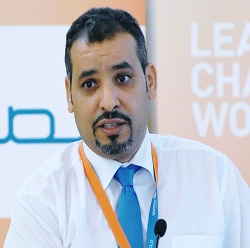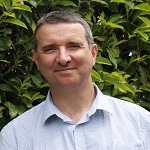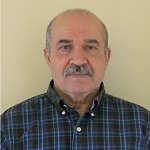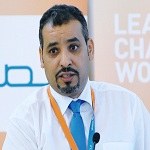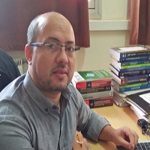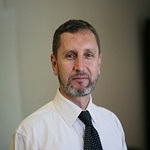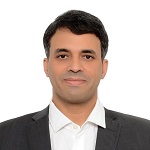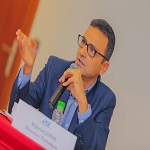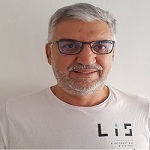Biography:
Dr. Mustapha Jouiad obtained his PhD in Materials Science and his Master degree in solid sate physics and physics of particles from University of Paul Sabatier, Toulouse, France in 1996 and 1993 respectively. Prior Joining Materials Science program at Masdar Institute of Science and Technology as faculty and principal investigator, he worked at very prestigious universities such as University of Illinois at Urbana Champaign (UIUC) and King Abdullah University of Science and Technology (KAUST) as well as in National Labs such as CNRS France and Lawrence Livermore National Lab (LLNL). His research interests are in Advanced Materials and Multiscale Characterization with applications in transport, energy and environment. His approach allows large probing of materials structure by means of various techniques such as Analytical Chemistry, Mechanical & Optical testing and Analytical Microscopy. The multiscale characterization provides with better correlation between the material microstructure at different scales (Micro &nano) and its respective macroscopic behavior. It gives also access to the relevant parameters influencing the material processing and its properties. The targeted achievement is to be able to predict material properties in order to optimize materials processing and design.
Recently, Dr. Jouiad’s research is focused on the development, modification and characterization of nanostructures, oxides and functionalized Nanoparticles that possess high optical, electrical and catalytic properties as well as in situ assessment of wettability alteration and 3D imaging. Dr. Jouiad is an accomplished & recognized Scientist in Advanced Materials & Characterization, he has authored and co-authored more than 70 publications in peer review journals and referred proceedings. He supervised and co-supervised several PhD and Masters students.
Abstract:Use of surface plasmon resonance to enhance water splitting process through solar energy excitations
The inherent increasing demand in energy solutions and new technologies in various sectors such as transport and environment has prompted scientists to custom the materials design and properties for targeted application. Most of the newly developed materials are complex composites with more and more reduced size and dimensions. These materials are developed to cope with the desire of the renewable energy and to cut with previous practices too much fossil energy demanding.
Hence, the energy solutions for the future suggest the realization and development of eco-friendly and economic energy sources. Many natural sources such as, solar energy, wind energy and biofuels have been used in order to reduce the carbon emission. In this regard, solar energy assisted water splitting and hydrogen production has shown a promising potential. Oxides such as TiO2 has excellent catalytic property in splitting water molecules, however, its ability to absorb light is limited within the UV region (band gap 3.2 eV).Adding localized surface plasmon resonance (LSPR) nanoparticles (NPs) such as Au or Pt to a suitable oxide material, the optical activity of the composite metallic dielectric photonic crystal (MDPhC) material can be significantly enhanced. An LSPR metallic particle absorbs the light in visible-IR ranges and subsequently provides hot electrons to the attached metal oxide layer. Hence, metal oxide catalyst could pursue its hydrogen generation process over the full solar spectrum.
The MPhC used in this investigation, is based on TiO2 acting as the WS catalyst and Au NPs as the LSPR material. The design of MDPhC is requiring additional compounds to receive the TiO2 catalyst consisting of substrate, buffer and stand made of Si, SiO2 and Al2O3 respectively.
In this case, the WS activity fundamentally can depend on the (i) production rate of hot electrons in the Au part through plasmon resonance, (ii) the transport of the hot electrons produced in Au to the TiO2 material, and (iii) the degree of crystallinity of the catalyst (TiO2).
This seminar will be tackling all these aspects and highlighting the importance of LSPR materials as well as the catalyst microstructure and their impact on water splitting activity of the WS device.
